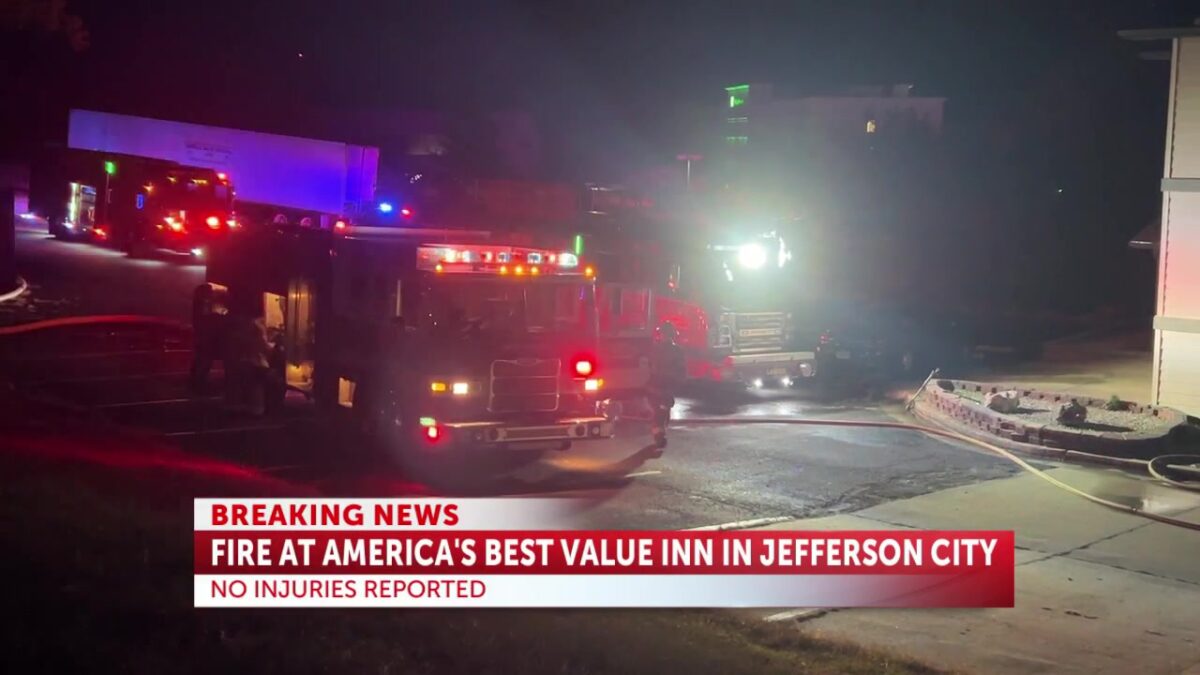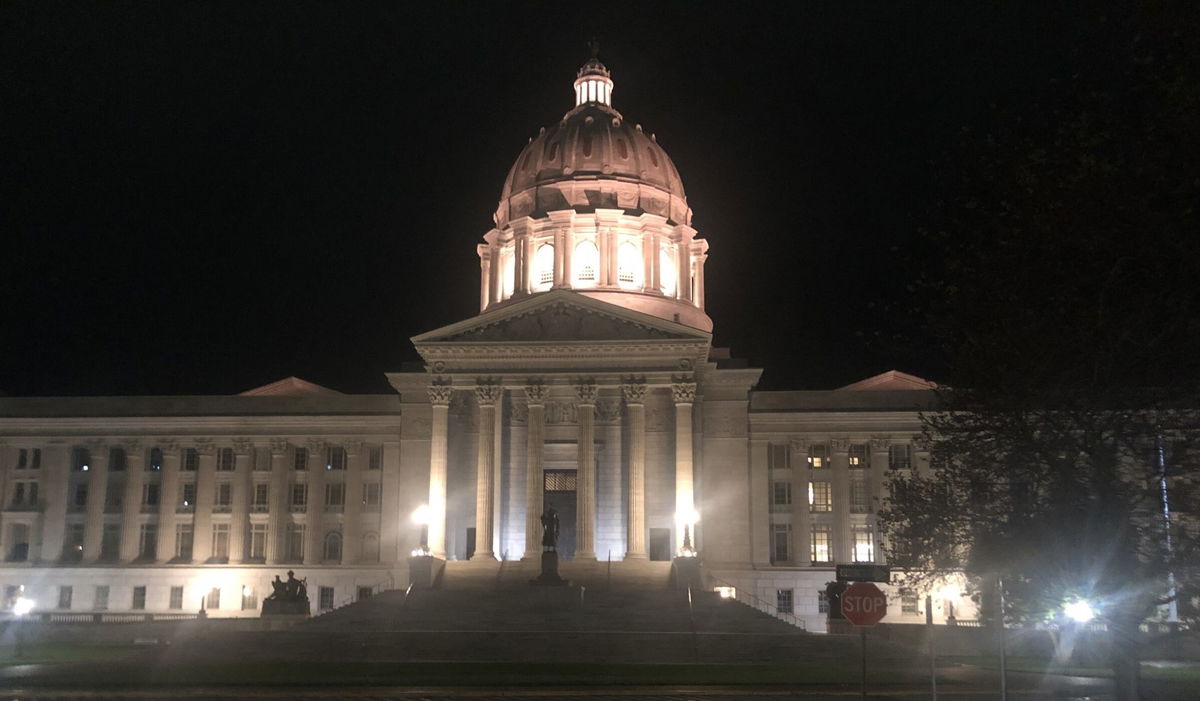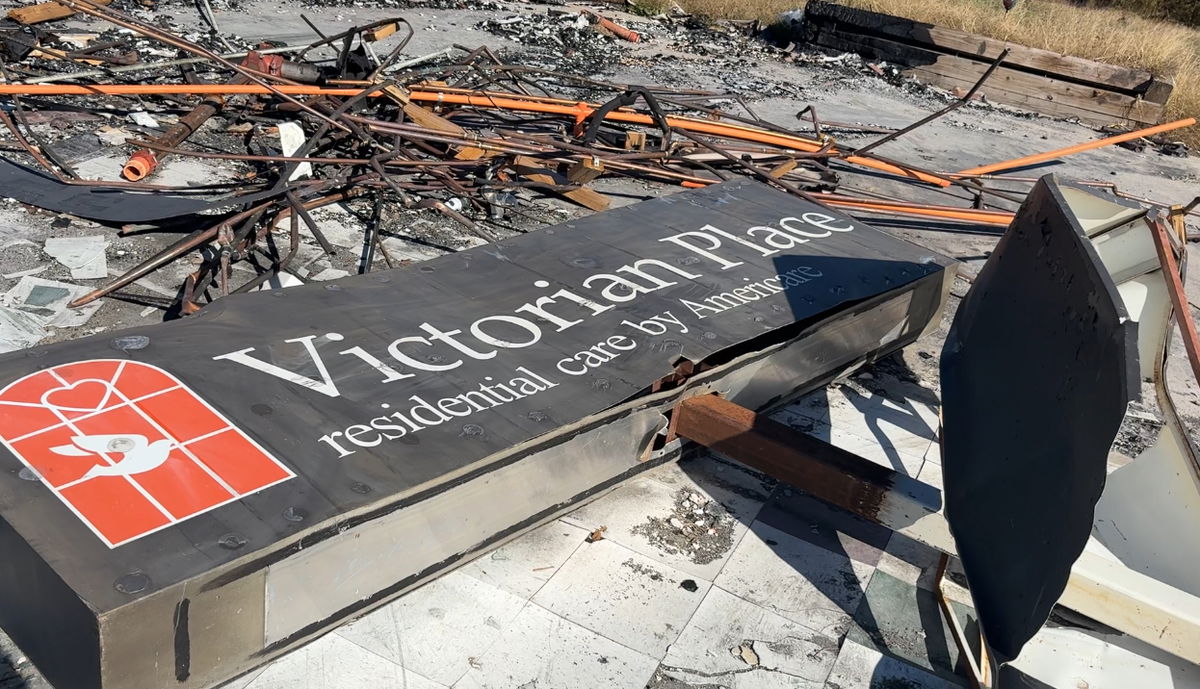Nia Hinson
EDITOR’S NOTE: The University of Missouri banned people who yelled a racial slur from a vehicle at Cayleigh Moore and Gabbi Gordon from campus. Those people were not students.
The university’s Office of Institutional Equity is investigating another incident that Moore and Gordon recounted to an ABC 17 News reporter. MU says that the incident had not previously been reported to university officials.
COLUMBIA, Mo. (KMIZ)
Cayleigh Moore walked to downtown Columbia one night from the University of Missouri’s campus like many students do. She didn’t think anything of it because it was her usual routine.
Moore passed the student center on her walk. Then a truck window rolled down, and someone inside yelled the N-word out as they drove by.
She says it wasn’t the first incident.
Moore sat alongside her friend, Gabbi Gordon, one Thursday afternoon a year later at the University of Missouri Student Center on Rollins Street. They reflected on their experiences at the university as two Black women attending a predominantly white institution.
Gordon and Moore recalled a separate time when the two were walking with a friend, when a vehicle drove by and, this time, made monkey sounds at the group.
The two said they stopped and stood stunned, trying to figure out what had happened. A few days later, they talked to other students on campus who had experienced a similar situation. Gordon and Moore said they’ve heard stories of several Black students on campus being harassed and called racial slurs.
“We go to a school with so many people. You don’t know these people. You don’t know what their intentions are and what they could do,” Gordon said. “Even if they think it’s funny, which it’s clearly not, you don’t know how far they would go with their actions.”
Ten years ago, frustration with incidents like these led to protests that rocked the MU campus and made national headlines. Student activists in the fall of 2015 said they were protesting for better treatment of minorities and more representation.
Students today say racism hasn’t disappeared from the MU campus, but it’s unlikely to boil over into the kind of demonstrations that filled the Carnahan Quad in 2015.
The protests
Ten years ago, tents filled the lawn near Carnahan Quadrangle on campus, and students were calling on university leaders to implement change. They believed racial inequalities on campus had persisted for years and needed to be addressed.
Students of color said they were called racial slurs, discriminated against, and harassed both physically and verbally.
A group that called itself Concerned Student 1950 led the demands for change.
Maxwell Little was one of the original 11 members of the group, which comprised student activists on campus. He now lives in Chicago, but remembers the turning point that led to the escalation in protests on campus.
Students had already been holding demonstrations for Mike Brown and Eric Garner– two black men who were killed by police in 2014. But what pushed students over the edge was Oct. 10, 2015, the day of MU’s homecoming parade.
A group of students barricaded then-president Tim Wolfe’s vehicle, letting him know the frustrations students of color on campus had. Between the crowd antagonizing the group and claims that Wolfe had hit one of its members — Jonathan Butler — with his vehicle, things reached what Little called a breaking point.
“You have a policy that wasn’t protecting Black American students on campus as far as like free speech,” Little said. “And to be able to actually get something done as far as racial policy when we talk about inclusion and diversity and being able to sit at the table with decision makers and make changes and talking about curriculum, that wasn’t inclusive to Black American students on campus.”
The mood on campus was solemn for student activists. They had to focus not only on completing their schoolwork to receive their degree, but now they were juggling civic engagement on a demanding scale. It was frustrating, but Little said he viewed it as a necessary sacrifice.
Their next step, 10 days after MU’s homecoming, was to release a list of demands.
Concerned Student 1950 list of demandsDownload
The group came together, demanding eight specific changes from university leadership. First, they wanted Wolfe out, along with a handwritten apology. They also demanded diversity, equity and inclusion efforts on campus, for students to be included in the curriculum and for the percentage of Black staff and faculty on campus to increase.
Wolfe didn’t agree.
On Nov. 2, 2015, Butler began a hunger strike that he pledged to continue until Wolfe either resigned or was removed. That ultimately led to tents filling the quad and nightly prayer vigils, as other students showed their support.
“Jonathan is a very calculated, smart dude. He knew in order to move the movement to the next level, he had to take an individual sacrifice, and that’s what he did,” Little said. “All of us supported him, and the student body supported him as well.”
It wasn’t until the Missouri Tigers football team showed its support, vowing not to participate in football-related activities until Wolfe was gone, that action came.
We’re black. Black is powerful. Our struggle may look different, but we are all #ConcernedStudent1950 pic.twitter.com/obCjSWCFVY
— HeMadeAKing (@1Sherrils_2MIZZ) November 8, 2015
Two days later, on Nov. 9, Wolfe, along with MU Chancellor R. Bowen Loftin, stepped away. That brought an end to Butler’s weekslong hunger strike.
“It was something that I couldn’t fathom because Jonathan Butler was deep into his hunger strike, we had camp city going up, we had a lot of momentum because the football team got involved,” Little said. “It was a beautiful day as you saw, and the rejoice on campus, it’s something I’ll always remember, and I’m glad it happened. It’s a shame that it actually took financial ruin for Tim Wolfe, or the board of curators, to actually do something.”
Wolfe later sent an email, listing concerns over public safety on campus as a main contributor to his choice.
Little said all protests at the time were peaceful, despite an incident on the day Wolfe resigned, when former MU professor Melissa Click was seen on video asking for “muscle” to remove a journalist. She was suspended, and later came out stating she regretted her actions.
The University of Missouri Board of Curators announced Mike Middleton as the interim president for the UM System. The board also turned over MU chancellor responsibilities from Loftin to interim Chancellor Hank Foley.
Has progress been made?
If you ask students Moore and Gordon if progress has been made on campus, they’ll say their answer is yes and no.
The two glanced over Concerned Student 1950’s list of demands, comparing them to some of their own experiences at MU. The demand that the two believe may have been achieved is demand No. 5: “We demand that by the academic year 2017-2018, the University of Missouri increases the black faculty and staff campus-wide to 10%.”
Gordon and Moore said they feel like they’ve seen more diverse professors, and both say they have multiple Black professors. However, data from the university shows that in 2024, about 3.7% of MU’s faculty were Black. That’s a number that appeared to have fluctuated in each category over the years since 2016.
LINK: Faculty demographics at the University of Missouri-Columbia
However, Moore feels progress has been lost in other areas, referencing the university’s decision to dismantle its diversity division in 2024, as well as its cancellation of certain events. The Legion of Black Collegians said that its Black 2 Class Block Party was canceled after administrators took issue with the name in August.
UM President Mun Choi had claimed at the time that the name of the event was not inclusive, but Gordon and Moore said the move appears to single out Black students.
“There’s Asian events and there’s Hispanic events and those are catered more towards their group, but it’s like we can’t have any of that,” Moore said. “It’s like as soon as we try, it was like ‘no, you’re being exclusive,’ but we’re really not because we allow them [people of other races] to come.”
Although in Chicago, Little still keeps up with the news on MU’s campus. He doesn’t think things have changed. He said he believed the university hired a diversity, equity and inclusion vice chancellor just to make it appear as though the school had done something.
Ten years later, Little is outraged by the university’s cancellation of the Black 2 Class Block Party.
ABC 17 News requested interviews with Choi and the members of the Board of Curators, but was told no one was available. UM System spokesman Christopher Ave sent a statement to ABC 17 News instead, writing that the university has made “significant investments in the success of all students.”
According to Ave, during the last 10 years, graduation, retention and successful career outcome rates have risen for all student groups:
Six-year graduation rates of all students have increased by 6 percentage points to 74.9%.
The retention rate for students who completed their first year at the university has risen by 5.5 percentage points to 92.7%.
MU graduates have a 95% success rate within six months of graduation, up 18% from 2017, the first year that such a measure was tracked.
Ave said that since 2015, the university’s provost office has added several faculty cohort programs focused on teaching and research support, training sessions and leadership programs. MU has also added leadership and professional development programs for its staff, Ave wrote.
“The university does not tolerate discrimination or harassment on our campus and works diligently to investigate complaints through various offices and when appropriate, the University of Missouri Police Department,” Ave wrote. “All reported cases are investigated and individuals who violate our policies or the law are held accountable. Potential consequences for those who commit such violations include being trespassed from campus, being expelled from the university and/or being charged with a crime.”
Hope and frustration
In fall 2025, Black students make up about 4.7% of enrollment on MU’s campus, according to data from the university. White students account for more than half of the student enrollment population at about 77%.
More than 11% of Missouri’s population is Black.
Other minorities, such as Hispanics and Latinos, account for about 6% of the student population, while Asians make up 3%.
Eddie Chiu is Taiwanese and is a freshman at the university. He said he sometimes thinks about the lack of the Asian population on campus, but believes the university is inclusive of all races. Chiu, however, said he wouldn’t mind seeing that number grow as he looks ahead to his future as a Tiger.
“It’s just something that I work with. I don’t personally mind it too much, but if there’s more, that’d be a better culture,” Chiu said.
For other students, the push now is to come together and brainstorm ways to hopefully see a change. Moore said she isn’t sure exactly what that might look like just yet.
“We shouldn’t have to try and force ourselves to replicate what they [Concerned Student 1950] did,” Moore said.
Moore said Choi called her personally about the racial slur that was yelled from the truck, offering an apology, letting her know of resources on campus, and reassuring her that the university is looking into increased security.
But a year later, she claims nothing’s changed.
“There’s been no difference. It still has happened this year. It happened the same year when it happened to me, and it’s just like he doesn’t care anymore because he’s like ‘Oh, I did this. What more do you want from me?’ basically,” Moore said.
Click here to follow the original article.









